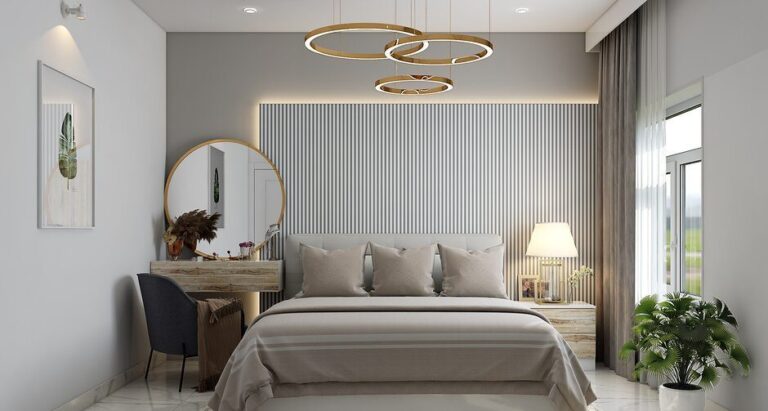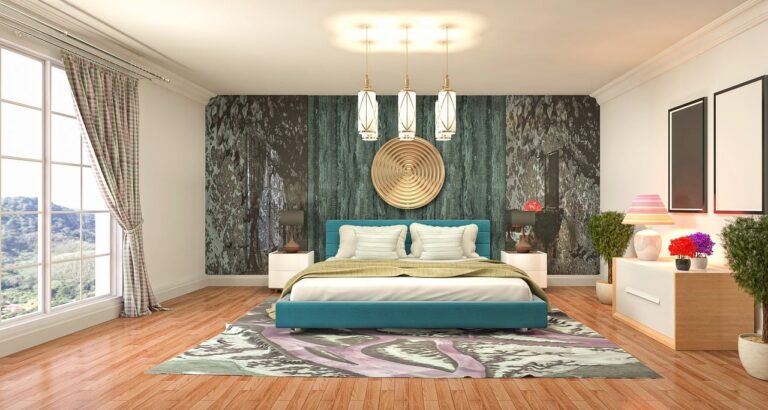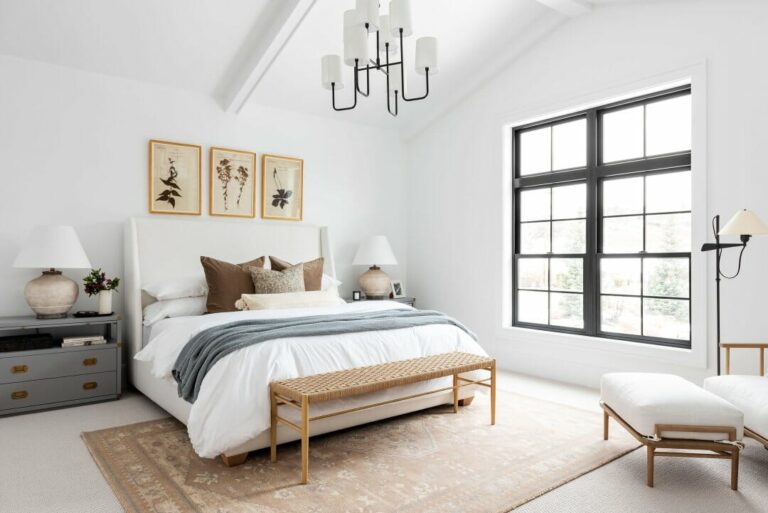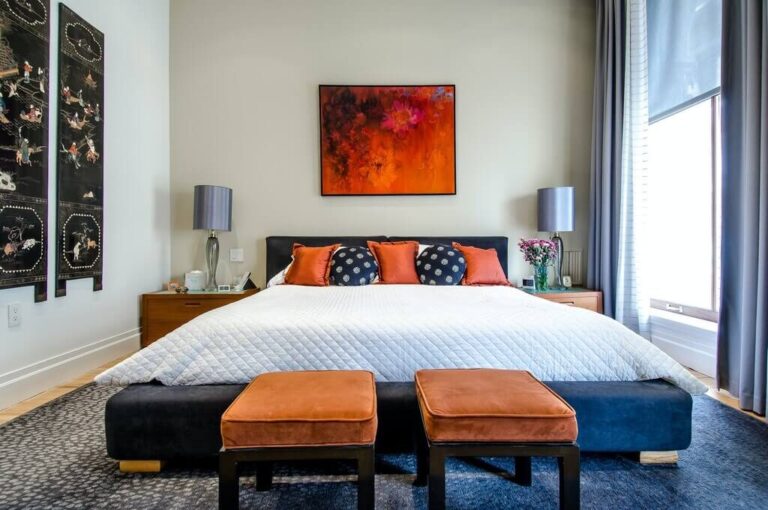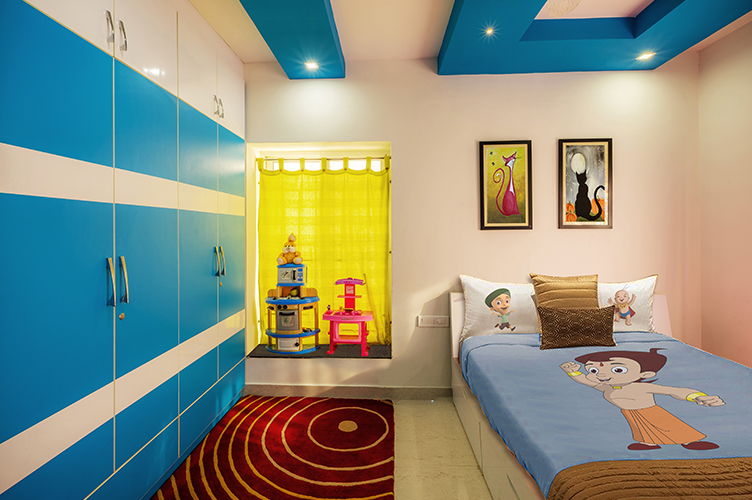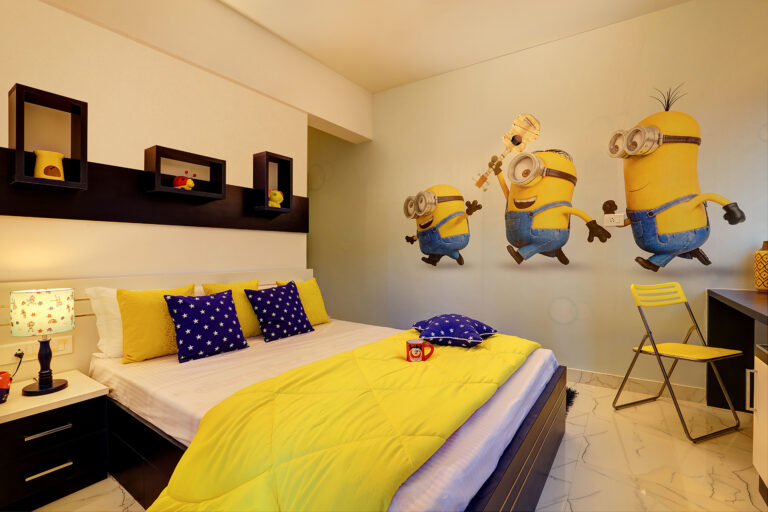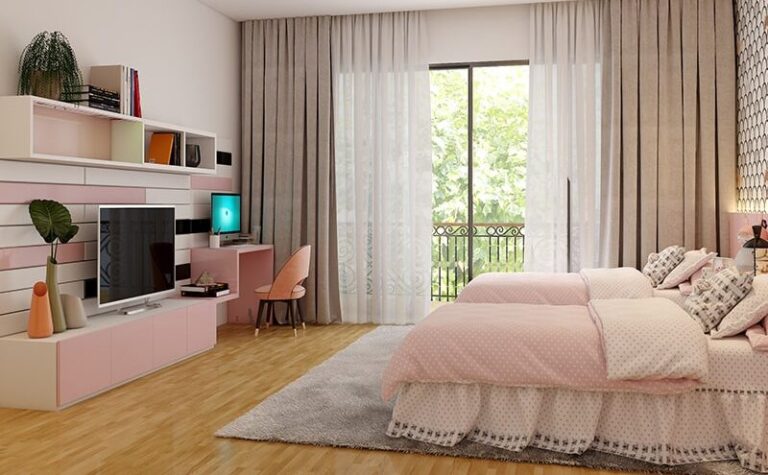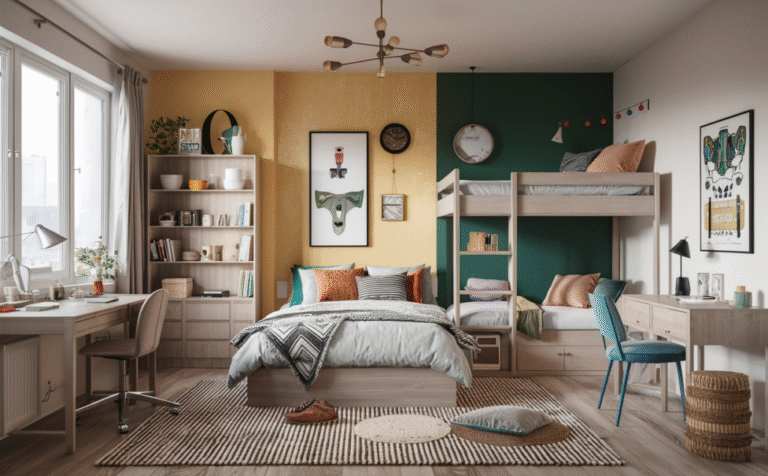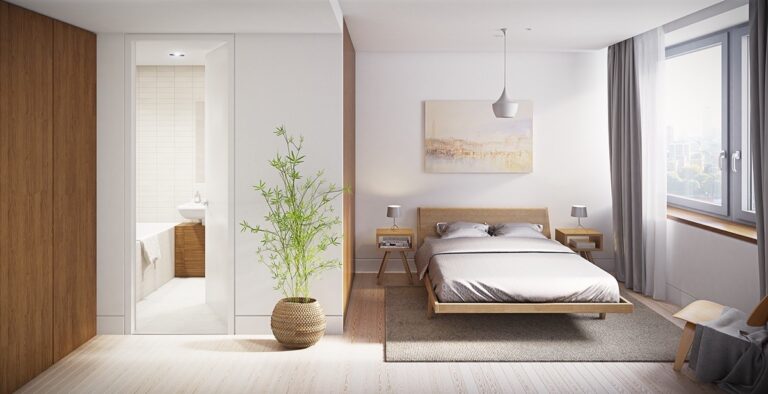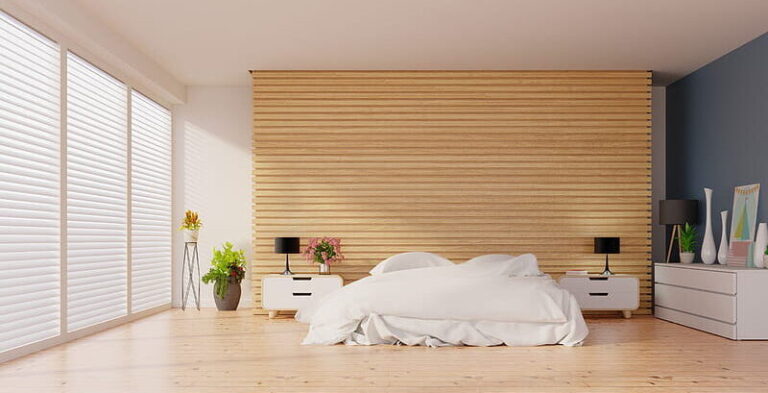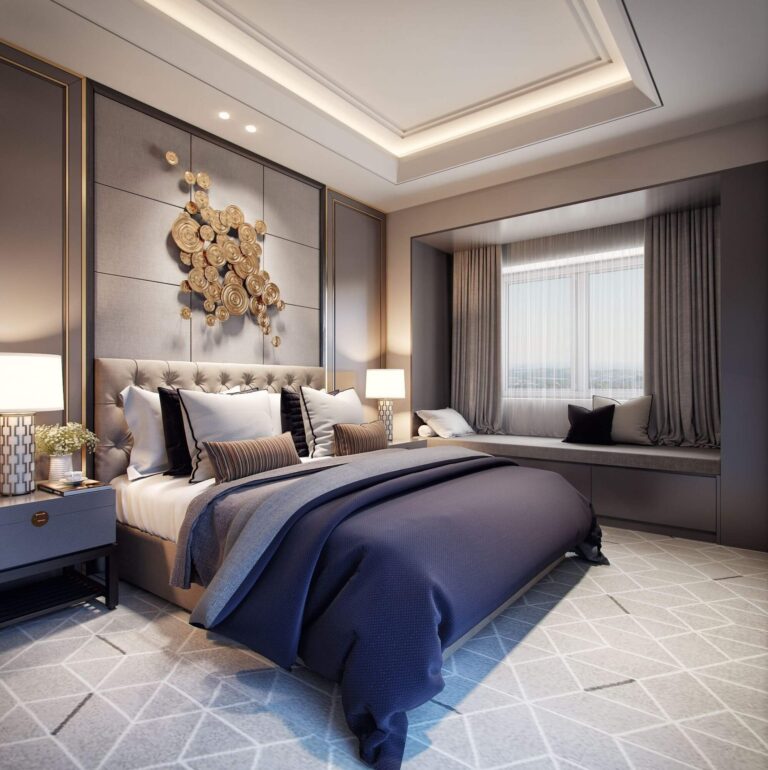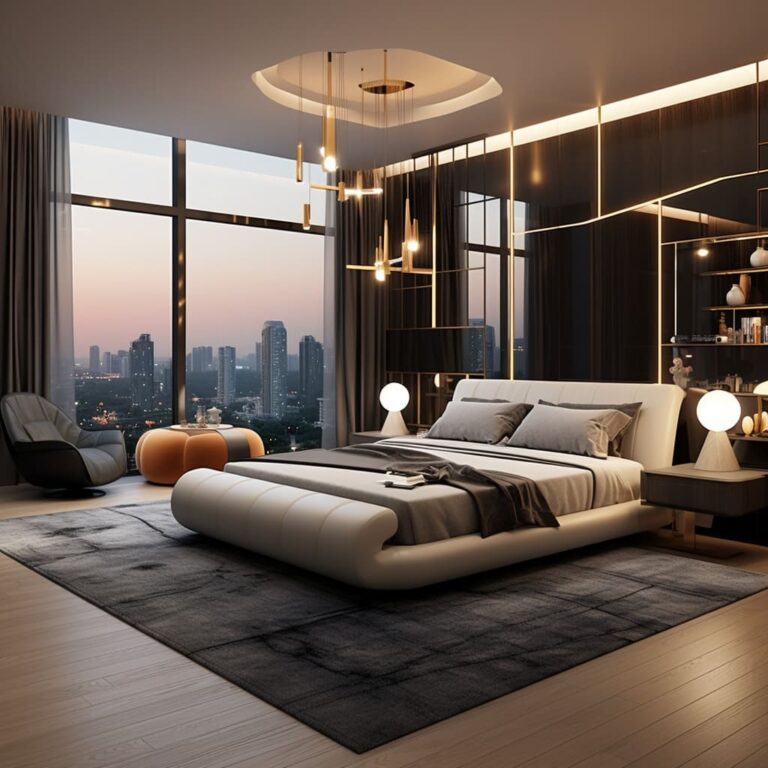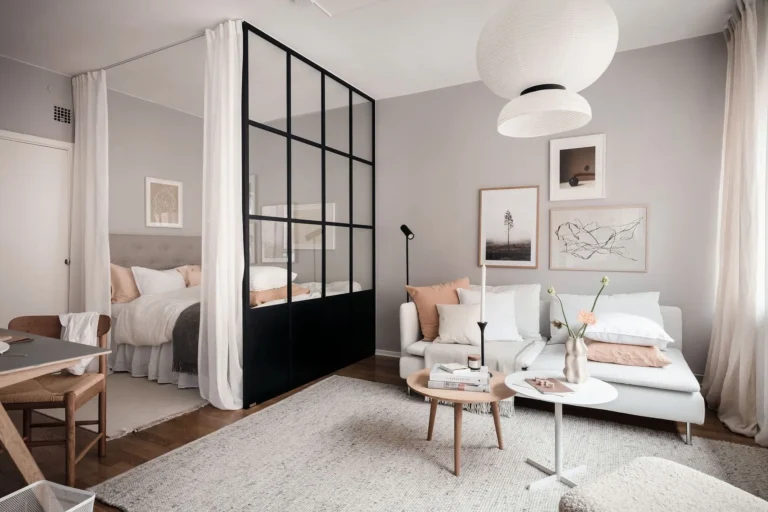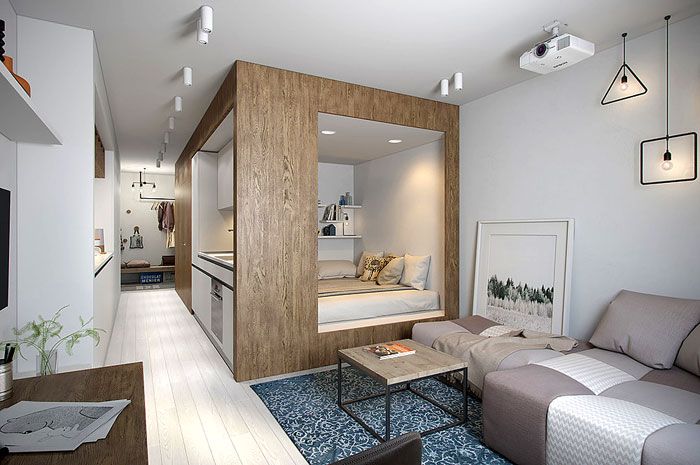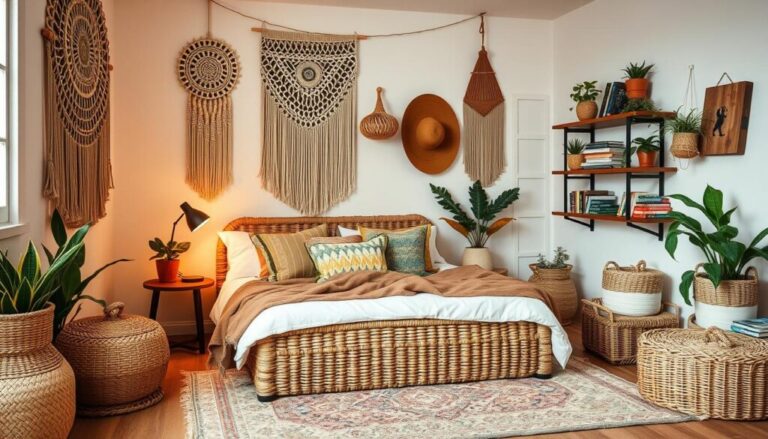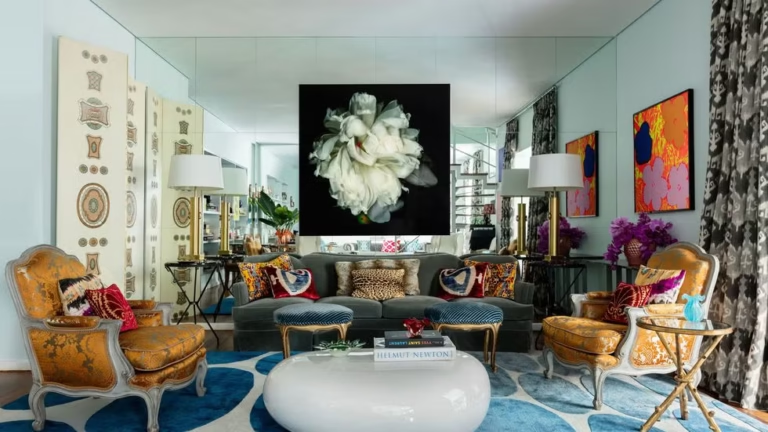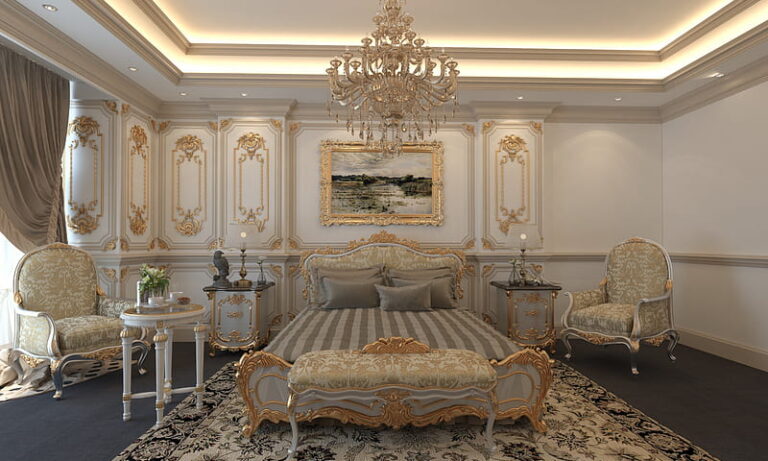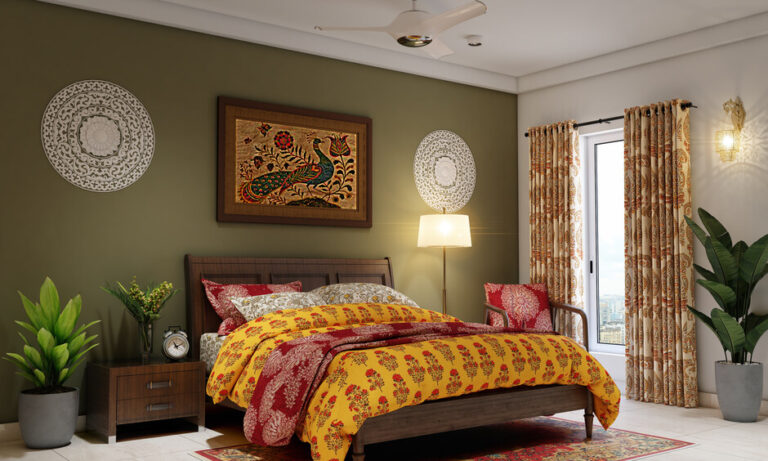Basic Interior Designs For Bedrooms
1. Master Bedroom
The master bedroom is the soul space of any home – not just the largest room, but the most emotionally grounded. It blends privacy and a touch of indulgence. Interior designers treat it as a sanctuary, layering textures, creating lighting moods, and personalizing corners for reading, meditation, or wardrobe display. It’s not just where you sleep – it’s where your day begins and ends with intention.
The master bedroom is more than just a place to sleep – it’s the visual and emotional heart of a home’s private life. Interior designers approach it as a personalized sanctuary, blending function and comfort through thoughtful layout and luxurious detailing. From statement lighting fixtures to custom wall textures and layered bedding, every element is curated to reflect the personality of its primary users. Whether incorporating walk-in closets, reading corners, or subtle smart tech integration, the master bedroom is designed to be both restful and refined.
- The largest bedroom in the home
- Designed for the primary occupants (usually a couple)
- Includes a large bed (queen/king), wardrobes, possibly an en-suite bathroom
- Often styled with a luxurious or personalized interior theme
2. Guest Bedroom
We Indians believe that ‘Atithi Devo Bhava’ - guests are god - we design interior spaces that honor and welcome them wholeheartedly.
The goal isn’t to showcase the homeowner’s tastes but to create a universally welcoming experience. Designers focus on neutral color palettes, comfortable bedding, soft lighting, and uncluttered surfaces. Often, multifunctional furniture like ottoman storage or foldable desks is used to save space while still offering utility. The essence of the guest bedroom lies in quiet comfort – an environment where visitors feel welcomed without feeling overwhelmed.
Guest bedrooms are like polite hosts – warm, welcoming, and uncluttered. Designed for comfort without personal bias, they often balance practicality and elegance. From neutral color palettes to flexible furniture (like foldable beds or soft lighting), the goal is to make any visitor feel at home, without overpowering them with the homeowner’s personal taste. It’s comfort wrapped in subtle hospitality.
- A welcoming, neutral space for visitors
- Functional and comfortable, but not overly personalized
- Includes basic furniture: bed, side tables, wardrobe, and possibly a desk
3. Children’s / Kids Room
Where stories begin, imaginations grow, and toys spark mini adventures. Designers craft these rooms with vibrant hues, soft edges, and multi-functional furniture that evolves with age. It’s not just a place to sleep but a zone for creativity, learning, and play. Built with safety and magic in equal measure.
Designing a child’s bedroom is an exercise in creativity, adaptability, and safety. These rooms are imagined as playful sanctuaries that encourage curiosity while offering structure. Interior designers often work with modular furniture, bold colors, and interactive elements like chalkboard walls or toy-friendly storage solutions. Rounded furniture corners, non-toxic materials, and accessible zones for play, study, and sleep ensure that the space evolves with the child while keeping joy and safety at the core.
- Designed with fun, safety, and creativity in mind
- Often includes bunk beds, study areas, and colorful themes
- Storage solutions are essential for toys, books, and clothes
4. Teenager’s Bedroom
Teen bedrooms are identity-driven; they’re not just rooms, they’re reflections of evolving tastes, dreams, and independence. Designers focus on flexibility, allowing for both function and expression. Study desks, pin boards, and ambient lighting zones are combined with trend-based elements like LED lights, wall murals, or creative shelving. While storage is important, so is personal flair – the space must feel owned, not assigned. Interior design here becomes a dialogue between form and the teenager’s voice.
These spaces echo personal expression, from posters and paint colors to lighting and layout. Functionality is crucial, with study nooks, digital corners, and music-friendly vibes. It’s where interior design shifts from ‘parent-approved’ to ‘self-curated,’ often becoming a visual diary of youth.
- A blend of personal style and functional space
- May include a study zone, gaming setup, and mood lighting
- Often themed with bold colors or posters to reflect identity
5. Minimalist Bedroom
It’s intentionally quiet. Every line, every object, and every shadow is placed to promote clarity and peace. Designers focus on material purity, hidden storage, and open space that lets the mind exhale. It’s where design breathes – with just enough of everything and nothing extra.
The minimalist bedroom is defined by its elegance in restraint. Clean lines, neutral palettes, and intentional negative space form the basis of its aesthetic. Designers often prioritize natural materials like wood, linen, and stone to maintain warmth without visual clutter. Hidden storage, sleek furnishings, and soft, diffuse lighting create a calm environment that supports mental clarity. Here, every object has a reason to exist – and that reason is rooted in both utility and beauty.
- Clean design with fewer items and neutral tones
- Focus on space, simplicity, and mental clarity
- Often uses floating furniture and hidden storage
6. Luxury Bedroom
A luxury bedroom is a crafted experience – not only through materials but also through ambiance, layout, and sensory detail. From velvet-upholstered headboards to Italian marble accents, no surface goes unnoticed. Lighting is layered and programmable, furniture is bespoke, and the overall design narrative tells a story of indulgence and elegance. Designers often incorporate spa-like bathrooms, walk-in wardrobes, or even lounge areas within the room, turning it into a lifestyle destination within the home.
Not just furnished but curated they combine indulgent materials like velvet, glass, leather, or marble with ambient lighting, smart automation, and designer furniture. Every element, from the headboard height to curtain texture, whispers refinement. These are rooms built for more than rest – they celebrate lifestyle at its finest.
- Premium finishes, statement lighting, upholstered furniture
- Often styled with plush headboards, walk-in wardrobes, or accent walls
- Smart automation for lights, curtains, and temperature
7. Compact / Studio Bedroom
Compact bedrooms prove that size doesn’t limit style. They challenge designers to be clever – blending beds into walls, merging storage into steps, and letting mirrors stretch perceptions. The key lies in vertical space, light reflection, and modular furniture that serves multiple purposes. These rooms don’t shrink your experience – they stretch your possibilities.
In compact bedrooms, every inch matters – but that doesn’t mean sacrificing style. Interior designers approach these spaces with problem-solving creativity, using vertical wall space, foldable furniture, and smart lighting to make small areas feel expansive. Mirrors, translucent dividers, and multi-use furniture (like bed-storage hybrids) are staples in studio room planning. The goal is to achieve fluidity and comfort without crowding the visual field – a dance of form and function.
- Designed for small apartments or studio flats
- Multi-functional furniture like foldable beds or wall units
- Emphasis on space-saving and clean aesthetics
8. Bohemian / Artistic Bedroom
Bohemian bedrooms are creative explosions, built not by the rules of design theory, but by the rhythm of the resident’s spirit. These rooms are layered with textiles, patterns, and artifacts from different cultures or personal experiences. Designers use handwoven rugs, macramé wall hangings, mismatched furniture, and greenery to cultivate a lived-in charm. There is no “wrong” in boho design – only authenticity. It’s not curated, it’s collected. It’s not perfect, it’s poetic.
Artistic Bedroom are visual jazz – no rules, just rhythm. They blend fabrics from faraway places, textures that tell stories, and patterns that break symmetry. It’s not about matching; it’s about layering – books with beads, plants with paintings. Every object here is a memory, and every corner is an expression of soulful, messy beauty.
- Eclectic mix of colors, textures, and patterns
- Personal and expressive, with handcrafted or vintage décor
- Ideal for creative personalities
9. Traditional or Classic Bedroom
They use solid wood furniture, elegant drapery, and symmetry to build a calming sense of order. Designers often blend warm tones, detailed moldings, and curated artwork to create spaces that feel lived-in and graceful. It’s less trendy, more traditional – and it ages like fine wine.
The traditional bedroom draws inspiration from timeless design language – symmetry, richness, and heritage. With solid wood furniture, plush upholstery, antique finishes, and warm lighting, these rooms exude elegance and comfort. Design motifs like crown molding, paneled walls, and vintage décor add historical depth without making the room feel outdated. It’s a celebration of design stability – built to age gracefully while honoring cultural and stylistic roots.
- Features carved furniture, patterned textiles, and warm color palettes
- Symmetrical layout with attention to ornamental details
- Inspired by timeless elegance

